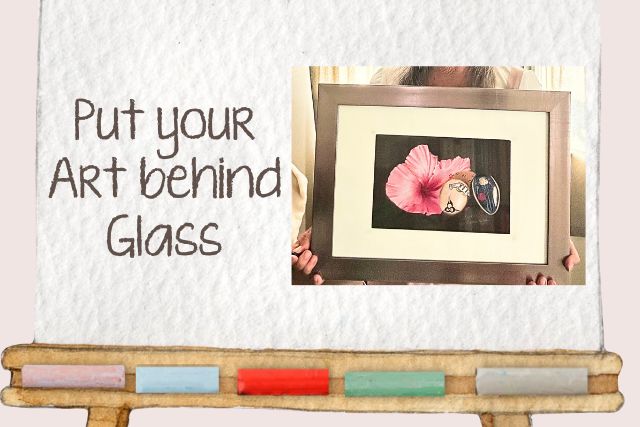A dilemma facing pastellists is the framing of their pastel artwork.
One of the many attractions of soft pastels as a medium is that they age very well. They don’t crack or fade, so when treated well, they can look just as vibrant after decades or even centuries as when fresh off the stick. There is a caveat: pastels are highly susceptible to shedding pigment and being smudged if they’re bumped. With this in mind, pastel paintings need to be handled with care.
Framing is not just a solution but a necessity to ensure the longevity of your pastel paintings. Framing your pastel artwork behind glass provides a protective barrier, shielding the surface from potential damage. Hanging your framed artwork further safeguards it from accidental knocks and bumps. While spraying the surface with fixative is an alternative, many pastellists prefer not to use this method as it alters the appearance of the pigment, compromising the integrity of our work.
When framing your pastel artwork, consider using professional services. A framing professional, especially one affiliated with the Professional Picture Framers Association (PPFA), can provide the expertise needed to preserve your art’s integrity. This ensures that your pastel artwork is handled with the utmost care and respect, guaranteeing its longevity.
Of course, you’ll have to pay for a professional picture framer’s services, which can be costly. If you can’t justify the expense, you can frame your paintings.
There are plenty of books and online guides to this, so getting instructions on how to do it will be easy. Just be sure to observe these rules: For more details on how to go about framing pastel artwork, grab a copy of my book “Pastel Painting Secrets.”
-
- When framing your pastel artwork, always opt for acid-free archival materials. These include Monsanto’s ‘Acid-Free Fome-Cor’ for mounting, 100% acid-free rag mat museum board for matting, and archival tape for attachments. While these materials may be more expensive, they are a worthwhile investment as they prevent any potential damage to your artwork over time.
- Leave a space between the artwork and the mat. Some loose pastel dust will inevitably fall off the surface of your artwork after it’s framed. It’s much better that this loose dust falls into a gap between the mat and the paper, where it can’t be seen, rather than falling onto the bottom edge of the mat. Trust me, seeing it is very distracting and will make you want to pull it apart and reframe it.
- During the framing process, it’s essential to handle your artwork with extreme care. The last thing you want is to finish framing only to discover pastel dust on the mat or inside the glass. So, when assembling your artwork package with a backing board, mat, frame, and glass, be extra cautious not to bump or knock the artwork, especially when it’s facing down.
Where should you hang your masterpiece? Don’t hang it where the sun can reach it, as the painting will fade over time. But do hang your framed artwork where everyone can see it—hey, you deserve a few compliments!
If you’re wanting step by step lessons head over to the Shop and view my books.
I’d appreciate you sharing this article:




0 Comments